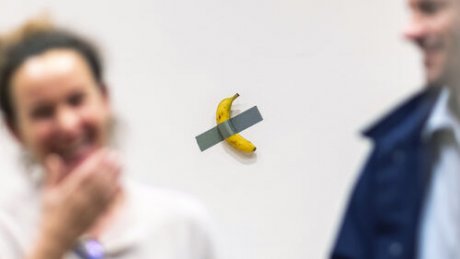India's annual Economic Survey spotlights decade’s gender equality strides
The Economic Survey, which sheds light on the expanding Indian Economy demonstrating resilience, has noted that the economy has consolidated its post-Covid recovery and is on a strong and stable footing

A day before the country's Union Budget is presented by the finance minister in Parliament, an annual document titled Economic Survey is presented by the government on the state of the economy. The crucial document is also an indicator of the prospects of the economy.
So it came as a heartening news when in the Economic Survey 2023-2024 released a day before the Union Budget on Tuesday, it was evident that India has been transitioning from a country focusing on women’s development to one of women-led development.
Tabled in the Parliament on July 22 by Indian Finance and Corporate Affairs Minister Nirmala Sitharaman, who interestingly is a woman finance minister making history by tabling her seventh straight budget, the Economic Survey 2023-2024 focuses on steering the country through compacts and consensus in the times of geo-political and global challenges.

The Economic Survey, which sheds light on the expanding Indian Economy demonstrating resilience, has noted that the economy has consolidated its post-Covid recovery and is on a strong and stable footing.
The Economic Survey, which points out a 218.8 percent surge in India's budget for schemes for the welfare and empowerment of women, highlights that to realise the clarion call to "Nari Shakti" (women empowerment), the Indian Government has made various legislative interventions and enabling provisions to ensure women’s participation in various professions.
According to the survey, the budget for women's welfare and empowerment has grown from Rs 971 billion (budget estimate) in FY14 to Rs 3.1 trillion in FY25 and also shows a 38.7 percent increase in the Gender Budget Statement (GBS) as compared to FY24 BE.
The share of the Gender Budget in the total Union Budget has increased to 6.5 percent in FY25, which is the highest since the introduction of GBS in FY06, as per the survey.
The Economic Survey has stressed that women-led development begins with ensuring the health and education of the girl child.
The sex ratio at birth (SRB) at the national level has improved from 918 (2014-15) to 930 (2023-24, provisional), and the maternal mortality rate has declined from 130 per lakh live births in 2014-16 to 97 per lakh live births in 2018-20.
The survey observes that Indian government's “Beti Bachao, Beti Padhao” (Save the Daughter, Educate the Daughter) campaign along with government-backed saving scheme "Sukanya Samriddhi Yojana" (meaning girl child prosperity scheme) has been instrumental in sensitizing collective consciousness towards cherishing, educating, and saving for the girl child.
The Economic Survey also points out that over the last decade, the prevalence of institutional delivery has increased from 78.9 percent in 2015-16 to 88.6 percent in 2019-21 due to programme to incentivize institutional delivery through Janani Shishu Suraksha Karyakram (JSSK), which provides free healthcare for pregnant women and sick new-borns, and aided by Prime Minister Matru Vandana Yojana (PMMVY), which is the largest conditional cash transfer programme in the country.
The programmes have had positive side-effects of utilization of public-health services and increasing the interval between births, as per reports.
The initiatives taken by the Indian government to empower women have focused on enablers that improve upon women’s conditions as well as tackle gender-specific disadvantages that inhibit their development.
Tackling the gender-specific disadvantages, the construction of toilets under ‘Swachh Bharat Abhiyan’ (Clean India Mission), the provision of clean cooking gas connections under ‘Pradhan Mantri Ujjawala Yojana’ and the provision of tap drinking water connections under ‘Jal Jeevan Mission’ are identified to have transformed the lives of women by reducing the drudgery and care burden, according to reports.
These government initiatives, besides addressing concerns of safety and dignity, have freed up time and energy for productive work such as participation in women’s collectives through National Rural Livelihood Mission (NRLM), as per the survey.
Meanwhile, two more government programmes — Mission Saksham Anganwadi and Poshan 2.0 — have been enlisted as enabling initiatives with the underlying principle that women’s health forms the bedrock of societal health.
These programmes have shifted the focus from calorific sufficiency alone to improved health, wellness, and immunity through micronutrient sufficiency, according to the survey report.
The Economic Survey stresses that women’s education — a key enabler — is at the centre of women empowerment.
“With implementation of the Sarva Shiksha Abhiyan (Education for All) and the Right to Education, gender parity has been achieved at all levels in terms of enrolment in schools," the survey has highlighted. "In higher education, the female GER has been greater than male GER for five consecutive years."
The survey acknowledged that the skilling schemes have put a dedicated emphasis on covering women.
It observes that the participation of women among those trained has increased from 42.7 percent in FY16 to 52.3 percent in FY24 under Pradhan Mantri Kaushal Vikas Yojana (PMKVY).
Under the government's Jan Shikshan Sansthan (JSS) Scheme, women constitute about 82 percent of the total beneficiaries, as per the survey.
"In the long-term ecosystem, i.e., in ITIs and National Skill Training Institutes (NSTIs), the participation of women has gone up from 9.8 percent in FY16 to 13.3 percent in FY24," the Economic Survey highlighted.
"Under the National Apprenticeship Promotion Scheme (NAPS), the participation of women has increased from 7.7 per cent in FY17 to 20.8 per cent in FY24," it said.
Women in Science and Engineering-KIRAN (WISE KIRAN)’ programme that strives to boost the involvement of women in STEM fields has benefitted nearly 1962 women scientists between 2018 and 2023, the survey report added.
The Vigyan Jyoti programme, initiated in 2020, that aims to address the underrepresentation of girls in various science and technology courses from 9th to 12th grades, has seen an enrolment of around 21,600 female students of Class IX-XII from 250 districts as of December 2023, according to the survey.
Meanwhile, the Economic Survey also highlighted economic empowerment of women, noting that increased access to education and skill development, as well as other initiatives for women’s empowerment have elevated the participation of women in the nation’s development and progress.
With rural India driving the trend, the Economic Survey finds that the female Labour Force Participation Rate (LFPR) rose to 37 percent in 2022-2023 from 23.3 percent in 2017-2018.
According to the survey, the Pradhan Mantri Jan Dhan Yojana (PMJDY) has facilitated the opening of 52.3 crore (523 million) bank accounts, of which 55.6 percent of account holders are women, as of May 2024.
The Deendayal Antyodaya Yojana- NRLM, the Self-Help Groups (SHGs) programme covering more than 89 million women under 8.3 million SHGs, has been empirically associated with women empowerment, self-esteem enhancement, personality development, reduced social evils, and medium impacts in terms of better education, higher participation in village institutions and better access to Government schemes, as per the survey.
Acknowledging the encouraging wave of women entrepreneurship fuelled by Start-up and Stand-up India, the survey points out that around 68 percent of the loans have been sanctioned to women entrepreneurs under Pradhan Mantri Mudra Yojana (PMMY), and 77.7 percent of the beneficiaries under Stand-Up India are women, as of May 2024.
Realising the vision of Digital India, more than 53 percent of the Prime Minister’s Rural Digital Literacy Campaign (PMGDISHA) beneficiaries are women, as of July 2023.
The Economic Survey brings out the significance of asset ownership among women and acknowledges the requirement of female ownership of houses constructed under Pradhan Mantri Awas Yojana as a nudge towards gender equity.
According to New Delhi-based think tank Indian Council of World Affairs, women-led development emphasising ‘Nari Shakti’ (women's power) became a clarion call for India’s participation in gender issues at the G20 forum.
India’s commitment to promoting gender-equitable policies and targeted interventions with consensus and collaboration have paved the way for reimagining women as architects of progress and development rather than passive recipients, reports the think tank.
According to a report by McKinsey, India can add up to 18 percent to its Gross Domestic Product (GDP), which is approximately $770 billion, provided it bridges its gender equality gap by improving female workforce participation in the country.
In addition to job creation by private and government sectors, entrepreneurship is a powerful yet largely untapped opportunity for working-aged women in the country, and by creating jobs, fuelling innovation and advancing investments in health and education, entrepreneurship among women can help transform India’s journey towards social and economic growth, said Invest India, the Indian government's investment promotion and facilitation agency.
Trending

.jpg?t=rgXbimPa9UfzIW7v6JcY1A)







.jpg)










